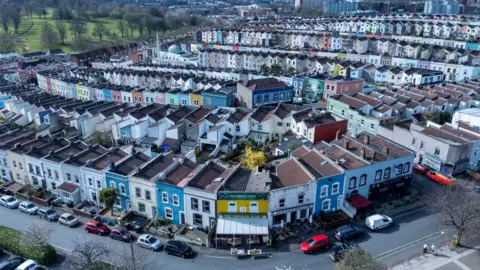Rental prices in Bristol are becoming increasingly unaffordable for residents, with new data revealing that private tenants are spending a staggering 44.6 percent of their income on rent. As reported by the Office of National Statistics (ONS), this percentage significantly exceeds the benchmark of 30 percent, which is widely considered to be the maximum proportion of income that should be devoted to housing costs.
In recent years, Bristol has joined the ranks of cities like London and Brighton, where the burden of rental payments is growing heavier. The figures show that both Bristol and its neighboring city, Bath, now rank among the top 20 least affordable local authorities in the country. This trend underscores a broader national issue regarding housing affordability, particularly in urban areas where demand often outstrips supply.
The determination of affordability is based on the ONS’s analysis of the proportion of monthly rent in relation to the monthly income of private renting households. The calculations indicate that Bristol has been on a concerning trajectory, with rent costs consistently surpassing the 30 percent threshold since 2016. Notably, 2018 marked a peak, with an alarming 46.9 percent of household income being spent on rental payments.
One of the factors contributing to escalating rents in Bristol is its dual university status along with strong commuter links to larger cities. As demand for rental properties increases, many landlords are choosing to sell their properties, driven by fears of rising costs associated with regulation and taxation. Sarah Coles, head of personal finance for Bristol-based Hargreaves Lansdown, noted that this trend results in fewer available properties, leading to increased competition and, ultimately, higher rents.
Additional evidence from the ONS highlights that the average rent in the Bath and North East Somerset region was approximately 42.7 percent of household incomes in 2024. This figure, reflecting a significant jump from 37.8 percent the previous year, illustrates a broader pattern of rising rental costs that have remained above the crucial 40 percent mark since 2016. In comparison, overall wages have not kept pace with these increases, thus exacerbating the challenges faced by tenants.
The financial strain is not unique to Bristol; many urban centers across England are grappling with similar issues as the housing market continues to evolve. In particular, the growth in rental prices has raised concerns about the sustainability of private renting as a viable housing option for the average resident. The data underscores the necessity for robust policy discussions around housing supply, tenant rights, and potential solutions to alleviate the burden of high rents.
As the situation stands, Bristol’s housing market exemplifies a crisis that impacts the lives of countless individuals and families, making it increasingly difficult for them to meet not just rent payments but also other essential expenses.
In light of these realities, communities are urged to engage with local councils and decision-makers to advocate for inclusive policies that prioritize affordable housing. Awareness campaigns and public discourse may also drive the momentum for change and potential respite for current and future tenants who find themselves caught in a challenging rental landscape.
For updates on this continuing issue and related news stories in Bristol, it is advisable for individuals to stay connected through local news outlets and community forums that address housing matters and advocate for fairer living conditions. Those struggling with the rising cost of living are encouraged to seek assistance and explore options that may provide support in navigating the current housing crisis.












